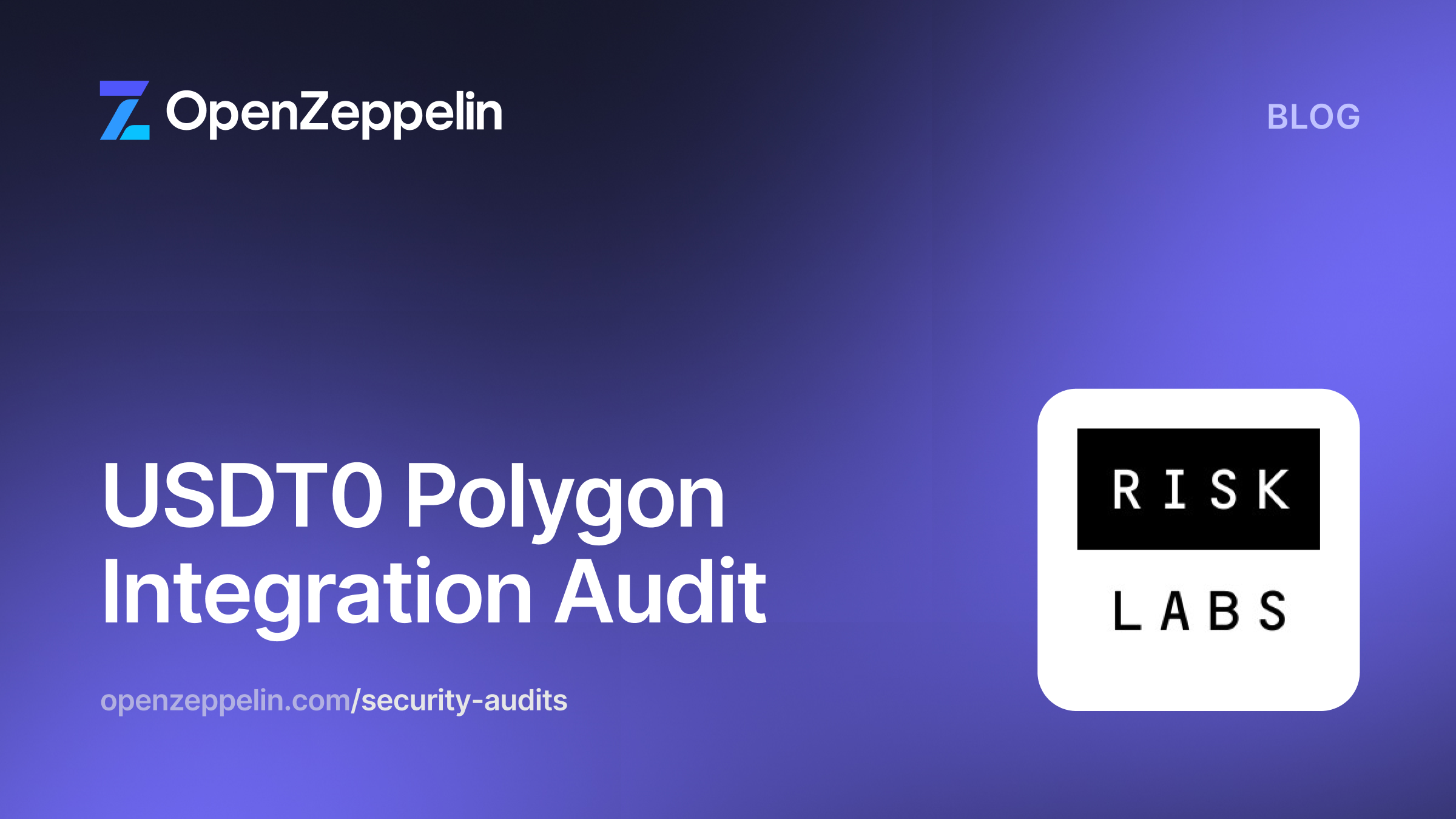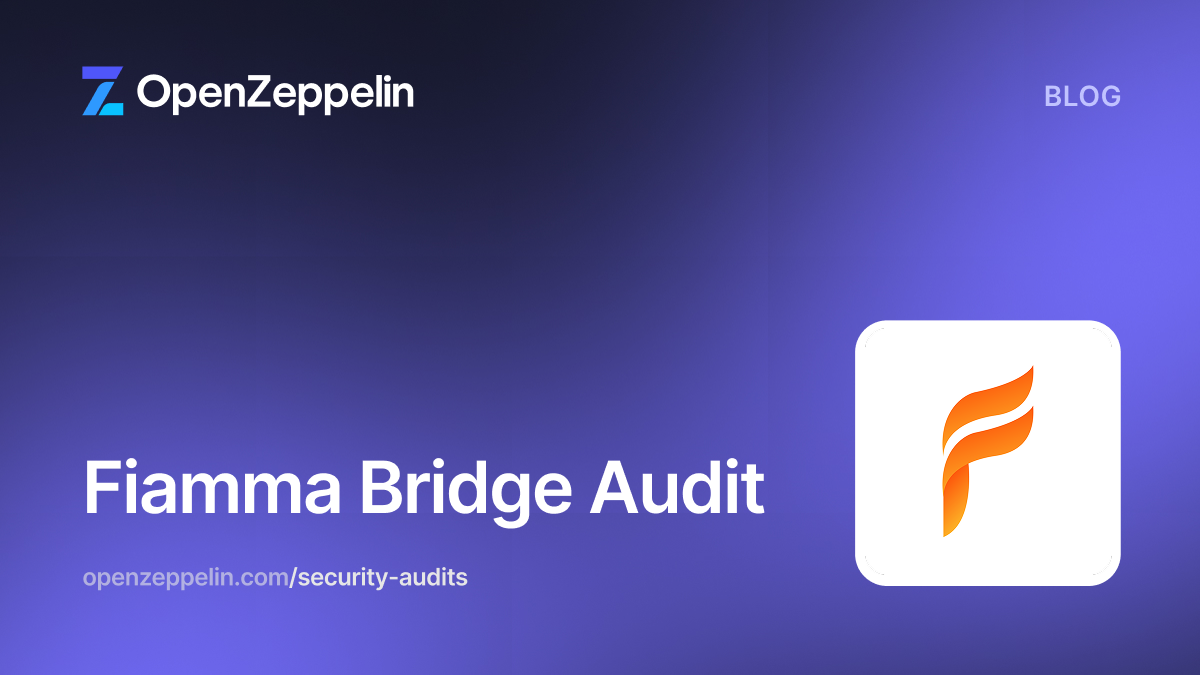The Dharma team asked us to review and audit the smart contracts implementing their protocol. We looked at the code and now publish our results.
The audited code is located in the dharmaprotocol/charta repository. The version used for this report is commit b110959477cf37375bf7e9344d40eb85219c8575.
Here is our assessment and recommendations, in order of importance.
Update: The Dharma team has followed most of our recommendations and updated their contracts. The new version is at commit 047327e8285b0a5f157c6c6a03ec142899c7572d. There are additional features at this version which have not yet been audited by us.
Critical Severity
Anybody can mint DebtToken
DebtToken extends MintableNonFungibleToken and thus inherits a public mint function that allows the caller to create new tokens.
Given that there is an additional create function defined in DebtToken which requires authorization, it’s clear to us that mint should require the same. Otherwise, it can be called by anyone with an arbitrary token id.
A consequence of this function being public is that anyone is able to impede the filling of a debt order, by minting a token with the corresponding issuance hash as id before the order is attempted to be filled. The entire system can be put to a halt in this way.
To fix this, add to mint the same authorization check seen increate.
Update: Fixed in 97690a9 by making mint an internal function in MintableNonFungibleToken.
High Severity
Use of block numbers to express moments in time
Implementors of the TermsContracts interface are expected to define repayment terms as a function of block numbers, as documented and seen in the function signatures of getExpectedRepaymentValue and getValueRepaid. To aid in this, entries in DebtRegistry record the issuance block number.
Block timestamps have a small risk of miner manipulation within a range of minutes, so it is recommended to use block numbers for certain usecases where this manipulation is a security risk. It should be noted, however, that block times are not fixed, and thus block numbers are not a reliable unit of time. For example, the constant SEVEN_DAYS_IN_BLOCKS will not always represent the timespan of seven days that it is meant to.
For the specific use case of determining repayment dates we think that the predictability of timestamps is preferable, and that it does not compromise the security of the system. Consider changing interfaces and data structures to use timestamps instead of block numbers.
Update: Changed to timestamps in d4dc030.
Medium Severity
Unbounded loop in PermissionsLib
The revokeAuthorization function in PermissionsLib performs a linear search over an array of unbounded size. Through subsequent calls to authorize, the array could grow to a size so large that a call to revokeAuthorization would be prohibitively expensive and not fit in a block.
Consider modifying the Permissions struct to include a mapping to save the index of each authorized address in the authorizedAgents array. In this way it will not be necessary to perform a linear search at all.
Update: Fixed across several commits.
Duplication of owner logic in DebtToken
DebtToken extends NonFungibleToken and redefines the latter’s setTokenOwne and ownerO internal functions, so that they modify the DebtRegistry instead of the NFT’s own tracking of ownership. This seems to result in coherent behavior, but we think it’s an unnecessary meddling with NonFungibleToken’s semantics, and could eventually cause some obscure hard-to-spot issues.
We would suggest to remove the redefinition of _ownerOf, and to modify _setTokenOwner so that it runs super._setTokenOwner() additionally to the calls on the registry. In this way the registry is kept in sync with the token’s tracking of ownership, but merely by intercepting changes of ownership, instead of entirely replacing that part of the token’s implementation.
Update: Fixed in 7a618cf.
DebtRegistry assumption could be broken
The contracts in the system assume that a valid Entry in the DebtRegistry will never have a null address for beneficiary. This assumption is used, for example, in RepaymentRouter’s repay to ensure a repayment is done for a valid issuance, as well as in DebtRegistry itself to check that an inserted entry is new and doesn’t clash with a previous one.
An authorized agent could, however, insert an entry with a null beneficiary through insert, or set the beneficiary of an existing entry to the null one through modifyBeneficiary. Thus, the assumption can be broken.
Add checks in insert and in modifyBeneficiary to reject null beneficiaries.
Update: Fixed in d314446.
External query gas limit may be problematic
In DebtKernel, the functions getBalance and getAllowance are used to query the balance and allowance of any arbitrary token used to fill a debt order. The query is done by calling the ERC20 balanceOf and allowance functions on said token contract with a gas limit of EXTERNAL_QUERY_GAS_LIMIT. (Although getAllowance doesn’t limit the gas, a comment implies that it should be doing so.)
The EXTERNAL_QUERY_GAS_LIMIT constant has a value of 4999, justified by the fact that changes to state require at least 5000 gas. Although we share the concern that an external call such as a balance check could cause a re-entrancy attack, the reality is that gas limits are not part of the ERC20 spec, and a token is free to implement a balance check that costs more than 4999 gas. In fact, quick tests show us that a balance check in a recently cloned MiniMe token (a popular token implementation) costs around 4320 gas, which is dangerously close to the constant limit imposed.
We would recommend to look into the recent new opcode STATICCALL to use as an alternative to limiting gas. This opcode will eliminate the risk of re-entrancy by ensuring that an external call performs no state changes, which is fine to assume for ERC20 functions balanceOf and allowance, as they are constant functions.
Update: Due to the unavailability of STATICCALL in high-level Solidity code as of yet, the team has decided to stick with a simple gas limit. However, the limit was raised to 8000 and the missing check was added in ff1a22e.
SimpleInterestTermsContract will silently accept other tokens
The function registerRepayment implemented in SimpleInterestTermsContract is meant to be called by the RepaymentRouter whenever a debtor repays part of an issued debt. Although said terms contract requires repayments to be done in a specific token repaymentToken, registerRepayment could be called with a different token as parameter. This is recognized by the contract, since the valueRepaid is only updated when the correct token is used, but the function will silently accept any other token. We would recommend to reject any other token, by returning false from registerRepayment.
Update: Fixed in 1bfa459.
Mismatch between signature and implementation of getValueRepaid
The documented semantics of TermsContract’s getValueRepaid is that it returns “the cumulative units-of-value repaid by the point at which a given blockNumber has passed”, where blockNumber is one of the function arguments. Both SimpleInterestTermsContract and NFTTermsContract do not implement this semantics: they ignore the blockNumber argument and return the value corresponding to the moment when the function is called. Consider either changing the interface and documentation, or implementing the documented behavior.
Update: Fixed in 6db0eee.
Low Severity
Inconsistent Pausable operations in DebtRegistry and DebtToken
The main functionality of DebtRegistry is correctly guarded with whenNotPaused modifiers to ensure they cannot be used when the contract is in “paused” state. There are other non-constant functions in the contract (those related to permissions) which are inconsistently guarded: revokeInsertAgentAuthorization has the whenNotPaused modifier, but none of the others do. Consider either removing the modifier in this function or adding it to the other three permissions-related functions in the contract for consistency.
Likewise, the contract DebtToken prevents all kinds of transfers during the “paused” state by adding the modifier to the _clearApprovalAndTransfer function. There is one additional operation which should likely be affected by pausing as well: approve. Consider adding the whenNotPaused modifier to the approve function in DebtToken.
Update: Fixed in 1ec4f35.
Edge case in PermissionsLib leaves data in storage
The revokeAuthorization function in PermissionsLib removes the given address from the authorizedAgents array. The algorithm does not correctly consider the edge case when the array is reduced from length 1 to length 0. The new array length is correctly set to 0, but the address previously in the list will remain in storage, out of bounds.
Although this is unlikely to cause a problem for the semantics of the contracts, consider zeroing out the last slot in the array before decrementing its length, similarly to what NonFungibleToken does.
Update: Fixed in f9ef4d9.
Unnecessary use of var
In getExpectedRepaymentValue of SimpleInterestTermsContract, var is used in the destructuring of a tuple.
It is encouraged to declare types explicitly, to avoid surprises with regards to integer sizes and their overflow semantics. In Solidity, var allows types to be deduced from the values on the right hand side of an assignment, and its use is discouraged.
To perform the same destructuring but with explicit types, first declare the variables principalPlusInterest and termLengthInBlocks with their explicit types (uint128), and then use those variables in a destructuring assignment without var: (principalPlusInterest, termLengthInBlocks) = unpackParameters(parameters).
Update: All uses of var were removed.
Duplicate declaration of data structures
There are two Issuance structs, one defined in DebtKernel and another one in DebtRegistry, which are basically the same, except for one member. This duplication could cause problems if the two data structure definitions ever get out of sync during development. Consider having one definition in a central place, together with the relevant operations defined as functions.
Update: Fixed in 0566271.
Notes & Additional Information
- In the description of Debt Issuance Commitments in the whitepaper, the
termsContractParametersfield is documented as astring, inconsistently with elsewhere (including the implementation) where it is abytes32value. DebtTokenhas three unused state variables:brokeredTokenId,tokenBrokeragePermissions,tokenExchangePermissions. Consider removing them.
Update: The variables have been removed.- The
TermsContractinterface does not mention in its documentation that implementors must expect repayments to come through theRepaymentRouter. Consider making it explicit. - There is two different names used to refer to the same concept:
issuanceHashandagreementId. Consider consolidating to a single name. - ERC721 is a moving target, and by now the interface implemented by the
NonFungibleTokenused is obsolete. For example,implementsERC721is now an optional function, and the functionsgetApprovedandtransferFrom(which is necessary for the correct functioning ofTokenTransferProxy) are no longer part of the specification. Please keep this in mind for further development. - There is no documentation in
DebtKernelor in the whitepaper of the order in which the different cryptographic signatures used infillDebtOrdermust be sent. Consider documenting it. - There is a limit on the number of arguments to a Solidity function which was apparently met in
fillDebtOrder, which forced the interface to receive arrays of the different types of values. A yet experimental feature of the Solidity compiler calledABIEncoderV2will allow declaring external functions that receive structs as parameters. We would suggest to use this feature once it’s available. SimpleInterestTermsContractandNFTTermsContractare abstract contracts because they don’t implement all of the functions declared in the parentTermsContractinterface. This part of the system is likely still in development.
Conclusion
One critical severity and one high severity issues were found and explained, along with recommendations on how to fix them. Some changes were proposed to follow best practices and reduce potential attack surface.
Note that as of the date of publishing, the above review reflects the current understanding of known security patterns as they relate to the Dharma contracts. We have not reviewed the related Dharma project. The above should not be construed as investment advice. For general information about smart contract security, check out our thoughts here.


